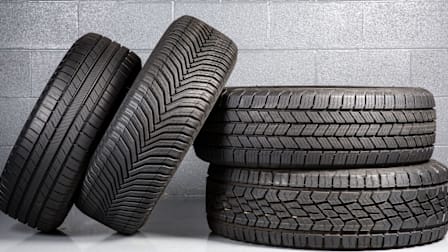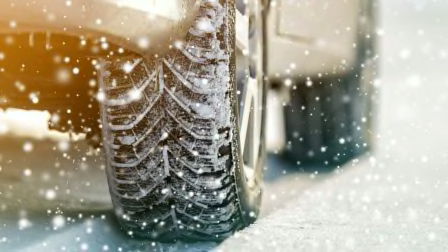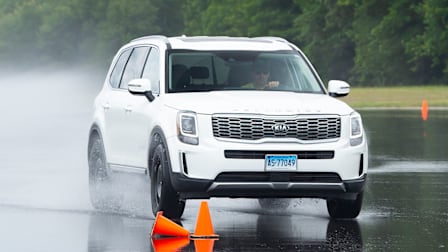Low-Rolling-Resistance Tires Can Save You Money at the Pump
Choosing the right tire can improve grip and reduce fuel consumption

Shoppers must consider many factors when buying tires: braking performance, wet-weather grip, how long they last, and price. But taking into account a tire’s rolling resistance could save you money at the pump.
Exactly how much depends on your car and other factors, but CR tests show that it’s possible to save a couple hundred dollars over the service life of a set of tires by choosing a model with low rolling resistance.
Rolling resistance refers to the energy it takes to rotate the tires, affected by the friction caused when the tire surface meets the road. The Department of Energy estimates that 4 to 11 percent of fuel consumption is due to tire rolling resistance.
There have been significant strides in tire technology designed to improve fuel economy, driven in part by automakers trying to meet increasingly stringent fuel-economy standards. Consumers also are eager to save at the pump, especially now.
Industry studies show that a 10 percent drop in rolling resistance equates to about a 1 percent improvement in fuel economy. It might not seem like a big difference, but fuel-economy gains are hard to come by. You can grab that advantage by making an informed tire purchase.
Performance All-Season-Tire Rolling Resistance
This bar graph ranks tested tires based on the rolling resistance we measured, and it illustrates how that resistance translates to fuel economy.
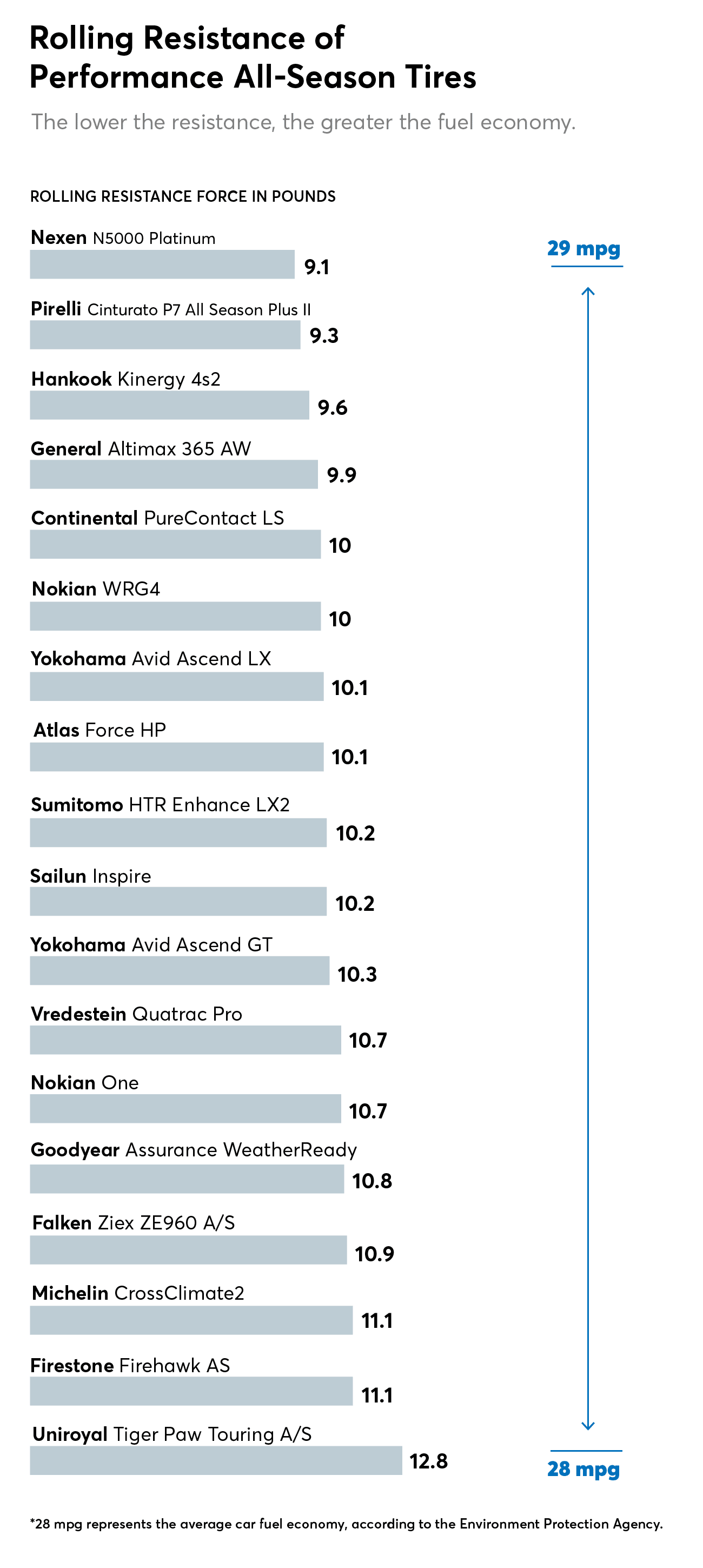
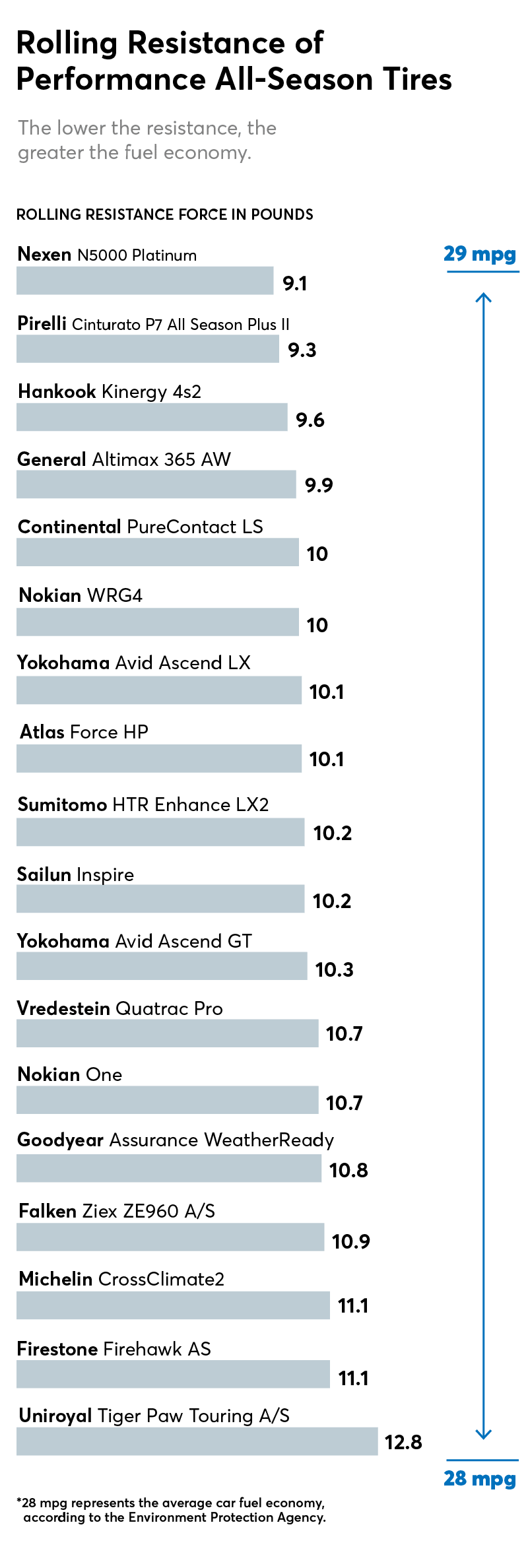
How Wear Affects Tire Performance
Tires provide the most traction when they are new, thanks to their deep and well-defined treads. With new tires, the rubber grips the dry road tenaciously, water is routed through the side grooves to resist hydroplaning, and they claw through snow. But that’s also when rolling resistance is at its worst.
This may surprise drivers who replace their worn-out tires for models known to provide excellent rolling resistance. The new tires’ fuel economy may not be as good as the old tires’, but it will improve as the tires wear, Petersen says.
Of course, once your tire has reached 4⁄32 inch, it’s time to start looking for new tires, regardless of how good your fuel economy has become. And at 2⁄32 inch, it’s absolutely time to replace the tire.
We test hydroplaning resistance, wet braking, and snow traction at our Auto Test Center in Connecticut. Hydroplaning and wet braking evaluations are conducted on a portion of the track with a controlled water depth.
For hydroplaning, we measure the speed at which the tires skim on the water surface, signaling a loss of steering control. Wet braking is conducted from 60 mph and simply records the stopping distance. Snow traction is a measure of the distance traveled while accelerating from 5 to 20 mph on moderately packed snow. A tire that requires shorter distance to attain that speed has better snow traction.
If saving money is your primary goal when you’re shopping for your next set of tires, look beyond the purchase price to consider the long-term costs, reflected in both tread life and rolling resistance. Shoppers might naturally avoid expensive tires, but CR’s tests routinely show that some of the priciest tires deliver both excellent traction and long life, making their true cost of ownership among the lowest.
How to Test Your Tire's Tread Depth
Grab a quarter and a penny to measure tread depth. Place the quarter upside down in a tire groove with a treadwear indicator—raised bars within some grooves. They will appear flush with the tread when the tire is worn out. The distance from the quarter’s edge to George Washington’s hairline is about 4⁄32 inch. If you can see all of Washington’s head exposed, it’s time to start shopping for new tires—you at least still have some grip left.
If there is some space exposed above George’s head, check the tire with a penny. Using the same technique, insert that penny into the same groove, and point Lincoln’s head down. If you can see the top of Abe’s head over the tread, the tire should be replaced immediately. Many states have made it illegal to use tires with a tread that shallow.
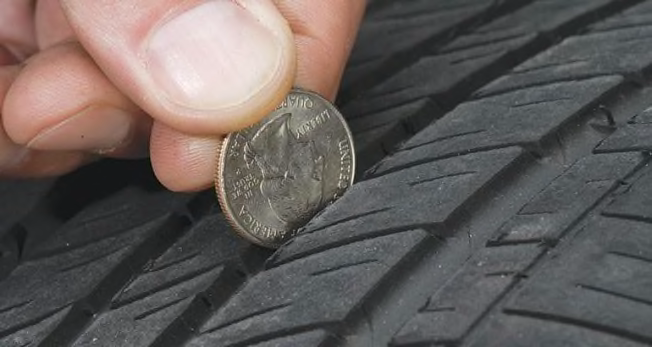
Photo: John Powers/Consumer Reports Photo: John Powers/Consumer Reports





























